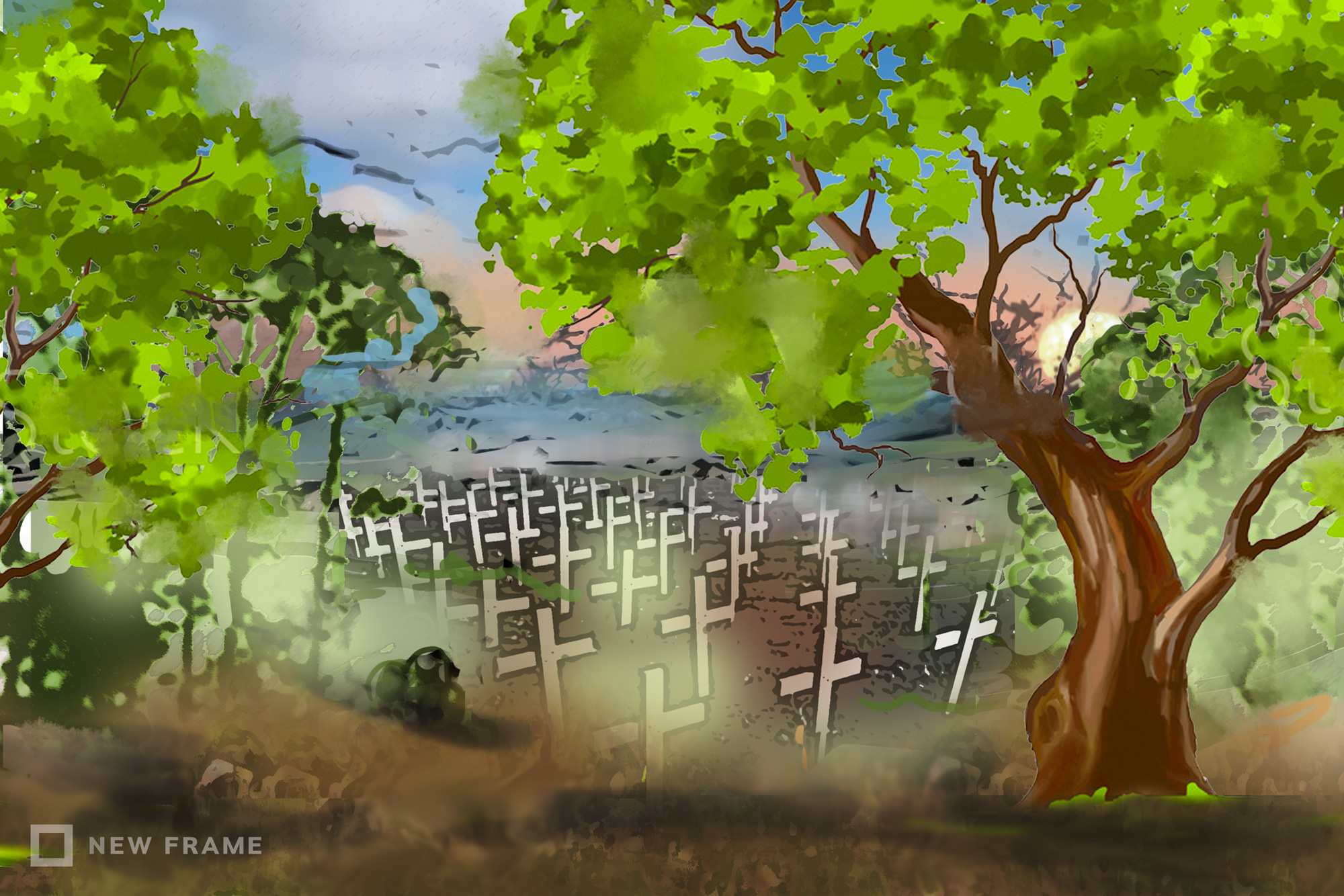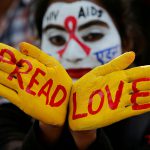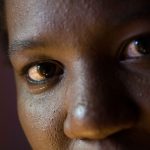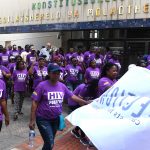The AIDS years
There was a time when family and neighbours were falling fast, the need for graves outpacing the available space. But antiretrovirals have improved and the stigma of HIV has lessened.
Author:
4 December 2019

They all died just when we thought they were getting better.
We went to buy cigarettes and beer for Lobhalaza, hastening off and taking shortcuts, passing by the old gum trees and the graveyard so we’d be back before the saliva he spat out dried up. When we got back, just in time, he gave us a rand each and, in many siSwati words, praised our dependability. So, sensing a welcoming atmosphere, we stayed. For the shade of the avocado tree and the beer-fuelled grown-ups’ tales.
Wiping beer foam off his whiskers, he related the story of his brother’s last days. Mtjengiseni had, for a long time, been feeling rather funny, his energy waning and lesions developing in his mouth. He jumped on the Kwentenjani Bus Service and went to consult at the Mbabane Government Hospital.
It was only after sundown, his butt now sore from sitting on benches in the corridor for an eternity, eating one banana after another, that the overworked Taiwanese doctor told him that he had HIV and that the symptoms suggested early signs of AIDS. For 15 minutes he was counselled and assured that the illness did not mean the end of the world, that if he took care of himself, he would live to be an old man.
But the doctor was wrong. Three weeks after the consultation, the lesions in his mouth got worse, so that all he could eat were bananas and thin emabele porridge. Weaker and weaker he became, owing to a diarrhoea that no suggested remedy could stop. To a straw mat in his mother’s rondavel he was confined all winter, a small fire constantly burning in the hearth for it gets really cold in the eSwatini highveld.
Related article:
But, Lobhalaza said, when spring came knocking, Mtjengiseni seemed to gain energy along with the sprouting of the grass and blossoming of the wattle trees. For the first time in months, he could eat and stomach potatoes and well-cooked meat. In no time, he was off the straw mat and taking a step or two in the dirt yard, a cane in hand for support. And it was not long before he wandered off on his own to say hello to Mkhulu Makhalima down the road, and to the Matfombeni Grocery Store where he’d be a spectacle, playing cards and all. Afterwards, he had set off to the fields dragging a hoe behind him. Mtjengiseni would live then, they were encouraged.
But they were wrong. A day after playing cards with the boys at Matfombeni, he succumbed. They discovered, when they went to dig a grave for him, that he already cleared a spot with the hoe he had pulled along behind him two or three days earlier.
Chicken and a wet coffin
Years later, when I was in high school and could no longer be sent to buy cigarettes and beer, we learnt that my cousin, Siphiwe, had been sick for more than a year and was recovering in hospital. She had fallen ill in Matsapha, an industrial town miles and miles away. The diagnosis had been HIV.
She was recovering now because they had her on antiretroviral treatment. Mother went to care for her at the Mbabane Government Hospital, in the 18th ward. Two days later, she was discharged so she could recover at home. Mother organised a bakkie, padded with a sponge mattress on the back, and brought her home.
Related article:
Within a month, Siphiwe could stand on her own two feet without support and regale us with stories from her world. Bongani, her brother, seeing that she could now eat solid food, went out one afternoon and bought a chicken. Smiling, he watched as she first ate the liver he had carefully fried for her. Siphiwe would live.
She died a week later after complaining about a headache. I remember the night vigil before the early morning funeral. She was in a cheap coffin that was wet and dripping at its base. I helped to carry it because my father said I was old enough for the task. Bongani said some should support the base, too, so it would not give. We all got our hands wet.
Gogo Magagula gave us Jeyes Fluid and told us to wash our hands with the disinfectant. She was livid, saying that they had thrown Siphiwe in the coffin straight from the freezer, like a dog. When the women from the area washed her later, the custom in our world, she was beautiful and plump, my mother said, as if still alive. She was buried among fresh graves near the mountain. And she was 17 years old.
Children died, too.
A rushed drying
Just when Zweli, the neighbour uncle’s first son, was starting antiretroviral drugs, he died. He told his mother he was tired and that he felt incredibly cold. They got the wood stove going in the kitchen and he sat down on a sponge mattress in the corner. He settled in nice and snug.
When roosters announced the arrival of a new day, he was gone. Malume Noko, his father, was the one to make the discovery. He came running to our house, with a wailing cry I still remember vividly, looking for my mother. He kept saying, “Skoni, he is gone. My Zweli is gone.” Over and over until he could speak no more.
He was not sent to the mortuary. No money. Mkhulu Dlamini, his grandfather, went down to Makhalima’s coppice and felled one ripe eucalyptus tree. Out of it, he hewed and cut and chopped until there was enough timber to put together a medium-sized coffin. It was then left to dry near the plum tree, so it could get both shade and sunlight in equal measure. A rushed drying.
Zweli was put into it two days later, after the coffin had been painted with whitewash my father donated. In it, he was transferred just before the night vigil. He was buried at dawn, as is our custom, in the graves near Maphalala’s fields. On his coffin was my then five-year-old brother’s blanket. They had been friends. My mother donated it when the question of a blanket to cover the deceased’s last house arose. My brother, who did not utter a word all week, seemed to approve.
Scars and stigma
Many perished, and many more survived, albeit with scars.
The early years of antiretroviral treatment led to many experiencing changes to the body, especially a slight disfigurement of the face. The medicine, while providing respite and halting the senseless deaths, also indirectly brought with it an uglier side: stigma. The Mbetses had to move to a community miles away for they could not take the community’s hostility. Children, at their sight, shouting, “They have AIDS!” Adults stepping out of the way on pathways, as if the virus was an airborne plague. But there were many people who stayed and took it all on, the open hostility and taunts and isolation and fear. They stayed until it all slowly faded out, in part because of familiarity and, later, educational efforts.
Related article:
It was worse for our agemates living with HIV, from primary school all the way to secondary school somewhat ostracised. I often wonder what became of Nokwazi, Zweli’s sister, who on antiretroviral medicine survived and grew up to be a beautiful teenage girl. Never getting dates and always a solitary figure by the flagpole during the lunch hour. Whenever a new classmate gravitated towards her and even initiated a friendship, they would be warned, “She has AIDS”, and that would be the end of that. I wonder where she is now.
New trees
On World AIDS Day on 1 December, we reflected on what HIV and AIDS has meant for our communities, reflected on how the American gay community (especially New York Groups like ACT UP and TAG) fought hard for research into antiretroviral therapy, forcing the United States government and, later, by extension, other governments to take it up as a core policy in the national interest. In fighting the stigma, important work was done in South Africa by the Treatment Action Campaign, the Soul City Institute for Social Justice and many others. Elsewhere, there were the National Emergency Response Council on HIV and AIDS in eSwatini, the Alliance of Mayors and Municipal Leaders on HIV/AIDS in Africa, and dozens more.
Looking at how treatment has, in the main, been successful and how efforts persist, even though sometimes there have been reports of drug shortages in certain areas. May we be alert always and resist attempts at undoing policies that have helped ensure people live longer through treatment and educational campaigns, support and more.
Passing through the Mbabane municipal graveyard in Sidvwashini, there’d be fresh graves every day of the week. Funerals, once reserved for weekends, were now happening on Mondays and Tuesdays. Every day. It was the same story in Nhlazatje, Mpumalanga. In the graveyard near the Embhuleni Hospital, marula trees had to be felled to make space for new graves. And it used to be a red landscape. Mounds of red earth. No tombstones, cement housings or the like.
Not so anymore. Just a new grave here and another one there. A funeral this week – only one – and another one in three weeks’ time. Trees grow again. Mounds of red replaced here and there by vegetation. May it remain so.



